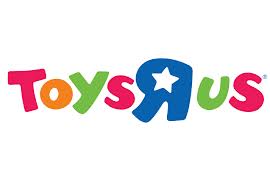Further to its year-end financial report from last week, which revealed that although Q4 sales declined by 1.8% (US$96 million) overall sales were up 0.5% (US$61 million) to US$12.4 billion for its full fiscal year, Toy ‘R’ Us has provided further updates on its TRU Transformation strategy, which launched last year.
In 2014, Toys ‘R’ Us made steady progress towards slowing sales decline, stabilizing cash flow and improving EBITDA (earnings before interest, tax, depreciation and amortization). The company also addressed a number of issues in organization and execution.
Global internet sales grew, thanks to the company’s strengthened omnichannel fulfillment model, while US margin improved through disciplined promotional activity and inventory management. Customer satisfaction metrics. meanwhile, confirmed that the changes the company have made so far provided a better shopping experience in-store and online.
TRU also grew its international presence, strengthened its leadership and formalized a global approach to doing business in 2014.
The toy retailer will continue with the TRU Transformation strategy in 2015 by focusing on four key priorities: transforming customer experience in-store and online, optimizing the company’s US$1.2 billion e-commerce business, international growth (particularly in China and Southeast Asia) and restructuring the company’s operations.
The company is also placing a renewed focus on its Babies ‘R’ Us business, marked by the hiring of seasoned Canadian retail exec, Reg McLay, as SVP of Babies ‘R’ Us.
Cost-cutting will be key for Toys ‘R’ Us going forward. The Wayne, New Jersey-headquartered company says it has found ways to trim between US$50million to US$100 million domestically by fiscal 2016, and US$50 million to US$75 million internationally by the end of fiscal 2016. Several of these initiatives are already underway.
TRU has already closed about a dozen stores in the US this year, primarily because of lease expirations, but it does have plans to close a significant number of stores for the balance of 2015.
In Canada and the US, Toy ‘R’ Us has outsourced parts of its operations accounting and fixed assets functions to a third-party provider.
In Europe, Toys ‘R’ Us is moving from a decentralized country-by-country leadership structure to a more centralized pan-European approach with a single management board that will provide leadership for business operations across the continent.
The company also no longer has near-term debt as it recently refinanced US$1.4 billion of its near-term debt maturities. It now has no significant outstanding debt repayments due until 2017.





















